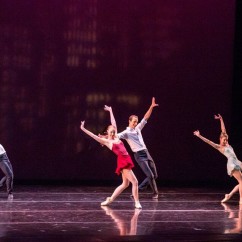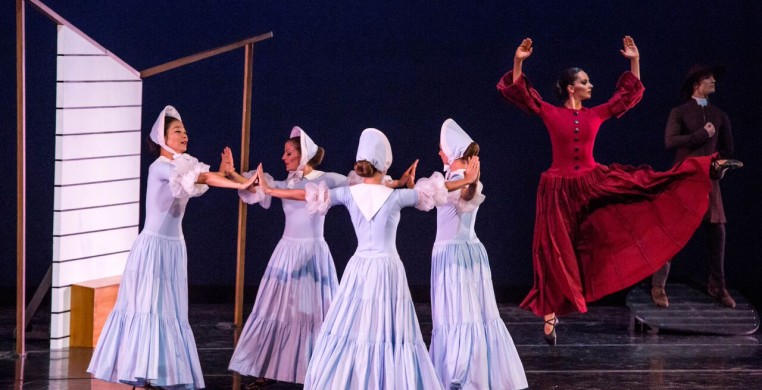You have to go back ten years to put the Chicago Dancing Festival into perspective, when co-founders Jay Franke and Lar Lubovitch pitched an idea that was likely met with mixed, if not tepid, responses.
For a decade this weeklong dance festival has provided tickets to the public for free. During that time, Chicago audiences have had the opportunity to see dancers of New York City Ballet, American Ballet Theatre, and the Martha Graham Dance Company, to name a few, along with eight CDF-commissioned premieres, while Joffrey and Hubbard Street remain festival regulars. So in the beginning it probably wasn’t unreasonable for someone to ask, “Who’s going to pay for this?”
Since then, CDF has proved to be an irreplaceable offering that shows no signs of slowing down, now calling itself the “nation’s largest dance festival.” Based on this year’s progress, I wouldn’t doubt it; a new partnership with Navy Pier means a performance on Friday with Chicago Human Rhythm Project, Natya Dance Theatre and Muntu Dance Theatre of Chicago, meaning five big-name venues (Auditorium, MCA, Harris, Pritzker, and Navy Pier) will be presenting dance over the next few days.
This type of audience development was always what Franke and Lubovitch had in mind: exposing people to the companies and artists they might not otherwise know about or pay to see. I imagine there were, and still are, risks involved in that regard. The dance economy has become such a fragile thing that even the most minuscule freebie has a chance of backfiring when it comes to participating companies selling subscription packages for their respective seasons. “Why pay for it if I don't have to?” as some concertgoers might wonder.
That’s an oversimplification, but it’s also a testament to what the Dancing Fest has accomplished in the last ten years, providing access to world-class performances that are not only unrestricted, but exciting too. And here’s the thing about the Dancing Fest: you always leave feeling like you want more. That’s good for the Fest and good for its contributors, and it has been tested for a long time now.
Maybe that’s why last Tuesday's opening performance at the Auditorium felt like it had a little more swagger than usual, dipping into the past and closing with a ferocious spectacle that is very much part of the present.
Opening the program was Pennsylvania Ballet in its CDF debut with George Balanchine’s Concerto Barocco, set to Bach’s Concerto in D Minor for Two Violins. Those classical elements have their place, though I’m not sure it was a place I wanted to be for long. The Balanchine aesthetic—those subtle, whimsical placements of the hands and feet—has a tendency to feel recital-esque in the right context. This happened to be one of those times, though you can’t argue with the performance. I hope the folks in Pennsylvania return in the coming years, perhaps with something different.
The Martha Graham Dance Company resurrected Martha Graham’s Appalachian Spring, which debuted in 1944. More than 70 years later and Graham’s palpably visceral tableau about the coming of a new season was exceptional. A standout here is Charlotte Landreau, who roused and playfully teased in spite of the typically stoic manner associated with the piece.
Stars of American Ballet, a project from New York City Ballet’s Daniel Ulbricht, presented Who Cares?, this a more care-free Balanchine at work using music by George Gershwin. Lots of flirtatious scenarios between couples lead to crowd-pleasing solos, and it was nice to get a glimpse of Dance Magazine cover boy Amar Ramasar at work. Balanchine's "Who Cares"
Balanchine's "Who Cares"
It came as no surprise that the loudest cheers of the night came before the last piece even began. The Joffrey Ballet brought back Alexander Ekman’s Episode 31 (by popular demand, according to an announcement made prior to curtain), underwritten by CDF for the Joffrey premiere in 2013. You can tell the dancers enjoy performing this as much as the audience enjoys watching. It’s as if Ekman took multi-media, ballet, modern and theatre, threw it all together and came out with something that feels exciting, fun and, appropriately, free. Alexander Ekman's "Episode 31
Alexander Ekman's "Episode 31

